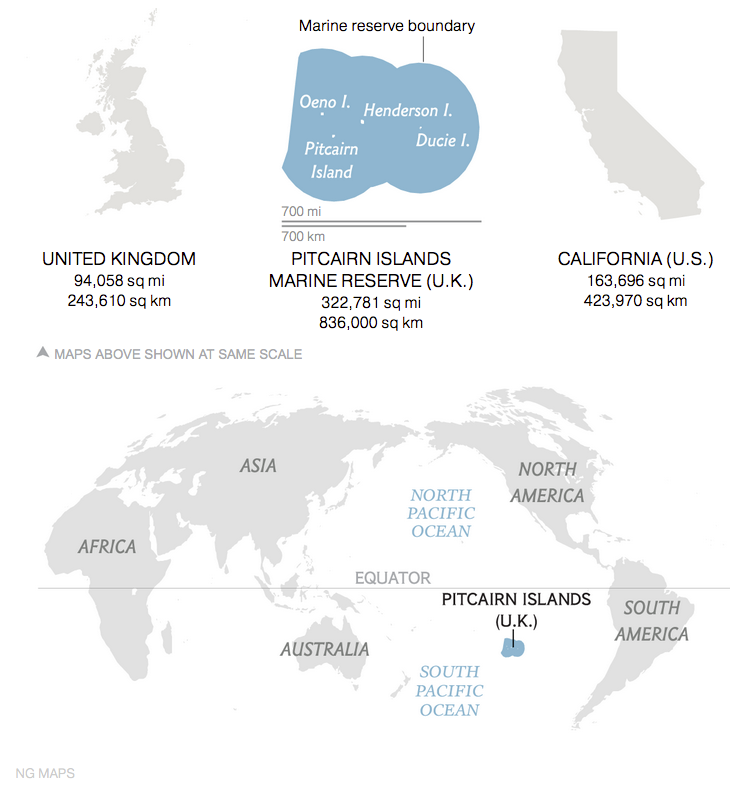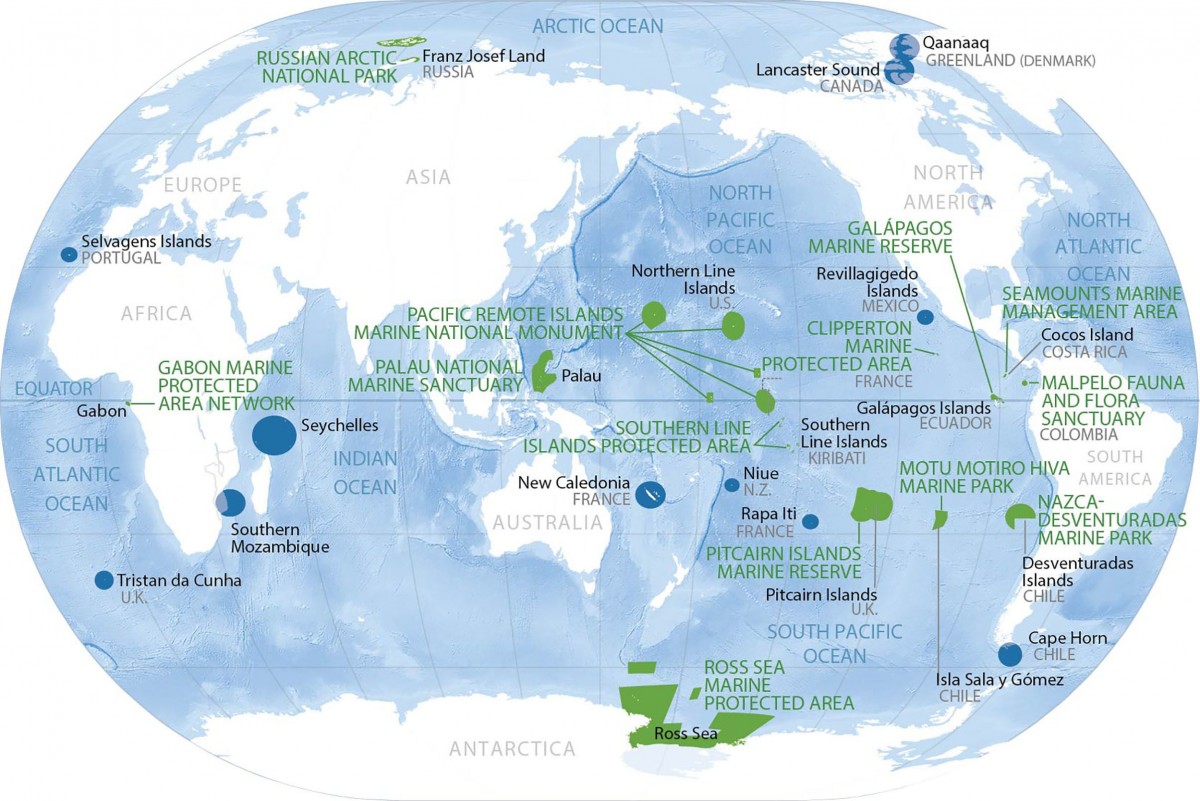Memo #395
By: Justin Alger – alger.justinw [at] gmail.com and Peter Dauvergne – peterdau [at] mail.ubc.ca

 Since 2006, states have established 18 large marine protected areas (MPAs) exceeding 200,000km2, most of which are located throughout the Pacific. This development represents the emergence of a new global norm of large MPAs in marine conservation. The emergence of this norm was not the product of the usual top-down multilateral process of norm diffusion, but rather the result of a select few transnational NGOs targeting politically feasible sites through dedicated domestic campaigns. The Pitcairn Islands Marine Reserve in the Pacific exemplifies this process, established by the UK government in 2015, and at the time setting a new record as the world’s biggest-ever contiguous marine protected area.
Since 2006, states have established 18 large marine protected areas (MPAs) exceeding 200,000km2, most of which are located throughout the Pacific. This development represents the emergence of a new global norm of large MPAs in marine conservation. The emergence of this norm was not the product of the usual top-down multilateral process of norm diffusion, but rather the result of a select few transnational NGOs targeting politically feasible sites through dedicated domestic campaigns. The Pitcairn Islands Marine Reserve in the Pacific exemplifies this process, established by the UK government in 2015, and at the time setting a new record as the world’s biggest-ever contiguous marine protected area.
One of the chief reasons large MPAs have become an increasingly attractive policy option for states is that they allow them to make rapid progress toward international conservation targets with usually relatively limited domestic resistance. NGOs such as Pew Charitable Trusts and National Geographic Society have been driving this new norm by strategically campaigning for large MPAs throughout the Pacific, irrespective of the socioeconomic circumstances of the host states. Large MPA campaigns have so far had an incredibly high success rate, with governments creating new marine reserves in the majority of cases. The creation of Pitcairn Islands Marine Reserve in 2015 is a telling example of how NGOs have framed, reinforced, and spread the large MPA norm through this bottom-up norm diffusion strategy.
Given their political appeal, NGO support, relatively weak corporate resistance, advances in satellite monitoring technology, and potential conservation effectiveness, the norm of large MPAs looks likely to continue to shape marine conservation in the Pacific and the rest of the global ocean for years to come. Despite concerns that large MPAs tend to be too remote to address the main sources of ocean decline, the growing uptake of this new global norm suggests the continued creation of large contiguous marine reserves, often in relatively remote areas. In the long-term, we expect the large MPA norm to shift NGO and state efforts towards increasingly contested marine areas, as well as toward better protections for the high seas, including in the Pacific.
About the Authors:
Justin Alger is a doctoral candidate majoring in international relations with a focus on global environmental politics at the University of British Columbia.
Peter Dauvergne is a professor of international relations specializing in global environmental politics at the University of British Columbia.

In March 2015 the U.K. government established the area around the Pitcairn Islands as a no-take marine reserve—the largest single reserve in the world. (Source: National Geographic)

Pristine Seas Project – Currently protected areas are in green. (Source: National Geographic)
Links
- Justin Alger and Peter Dauvergne, “The Politics of Pacific Ocean Conservation: Lessons from the Pitcairn Islands Marine Reserve,” Pacific Affairs 90, no. 1 (March 2017), forthcoming issue.
- Rodolphe Devillers et al., “Reinventing Residual Reserves in the Sea: Are We Favouring Ease of Establishment over Need for Protection?” Aquatic Conservation: Marine and Freshwater Ecosystems 25, no. 4 (2015): 480–504.
- Pierre Leenhardt et al., “The Rise of Large-Scale Marine Protected Areas: Conservation or Geopolitics?” Ocean & Coastal Management 85, part A (2013): 112–118.
- Martha Finnemore and Kathryn Sikkink, “International Norm Dynamics and Political Change,” International Organization 52, no. 4 (1998): 887–917.
- Alan M. Friedlander et al., “Co-operation between Large-Scale MPAs: Successful Experiences from the Pacific Ocean,” Aquatic Conservation 26, no. S2 (2016): 126–141.
- Rebecca L. Singleton and Callum M. Roberts, “The Contribution of Very Large Marine Protected Areas to Marine Conservation: Giant Leaps or Smoke and Mirrors?” Marine Pollution Bulletin 87, no. 1–2 (2014): 7–10.
Related Memos:
See our other memos on Pacific Islands.